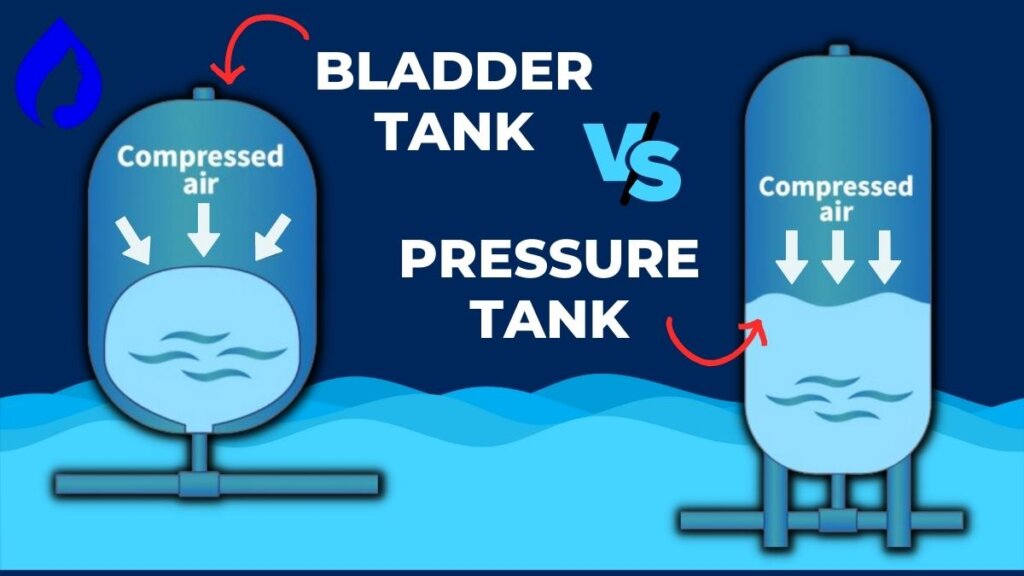
When it comes to water storage, bladder tanks and pressure tanks are two popular options. But what sets them apart?
Bladder tanks use a flexible bladder to separate water and air, while pressure tanks rely on compressed air to push water out. As a result, bladder tanks are smaller and easier to maintain, while pressure tanks come in larger sizes but may need more upkeep.
Keep reading to learn more about bladder tank vs pressure tank and which is best suited for your needs.
👉Bladder Tank VS Pressure Tank: Differences in a Nutshell
| Factor | Pressure Tank | Bladder Tank |
| Size | Large | Smaller than pressure tanks |
| Handling capacity | 2-1000+ gallons (approx.) | 20-50 gallons (approx.) |
| Ease Of Maintenance | Need frequent maintenance | Easy to maintain |
| Lifespan | 5-10 years | last longer (10-20 years) |
| Cost | $100 and $500 | $200-$100 |
Also Read: Why Is My Water Softener Causing Low Water Pressure?
📏Size
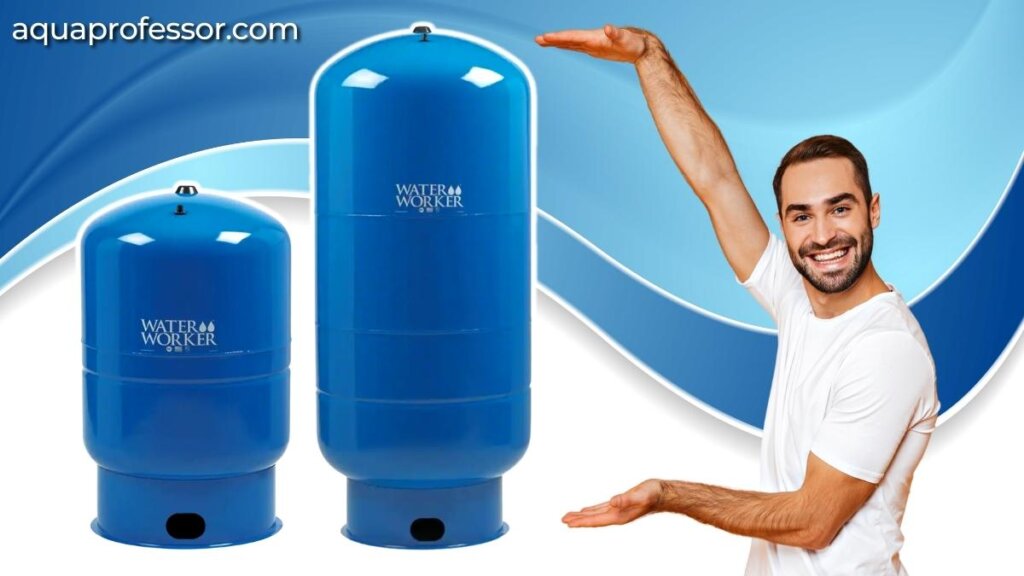
🫙Handling Capacity
🔧Ease of Maintenance
➕Lifespan
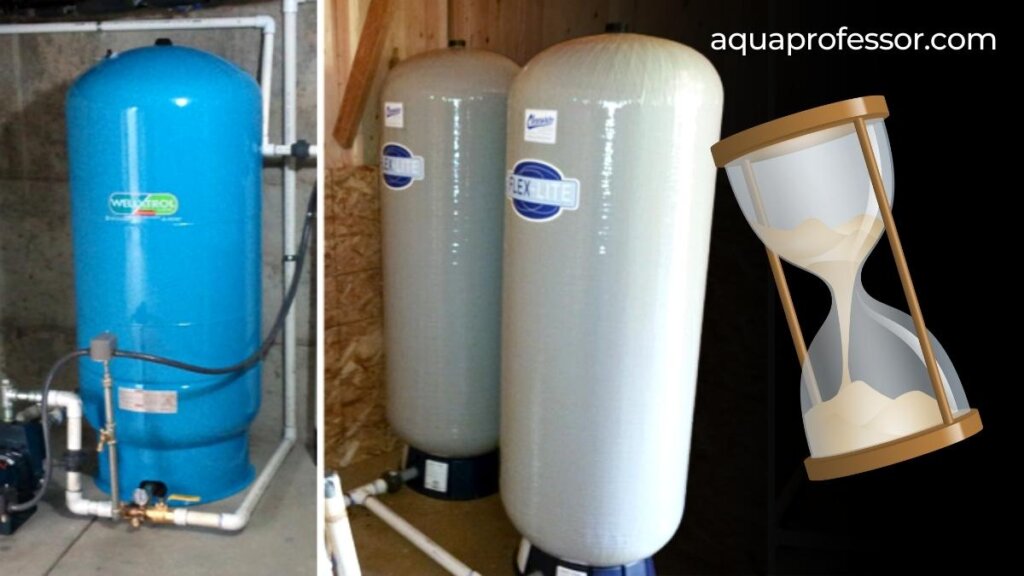
💲Cost
Also Read: What Is A Water Softener Loop?
📌What Is a Bladder Tank for a Well?
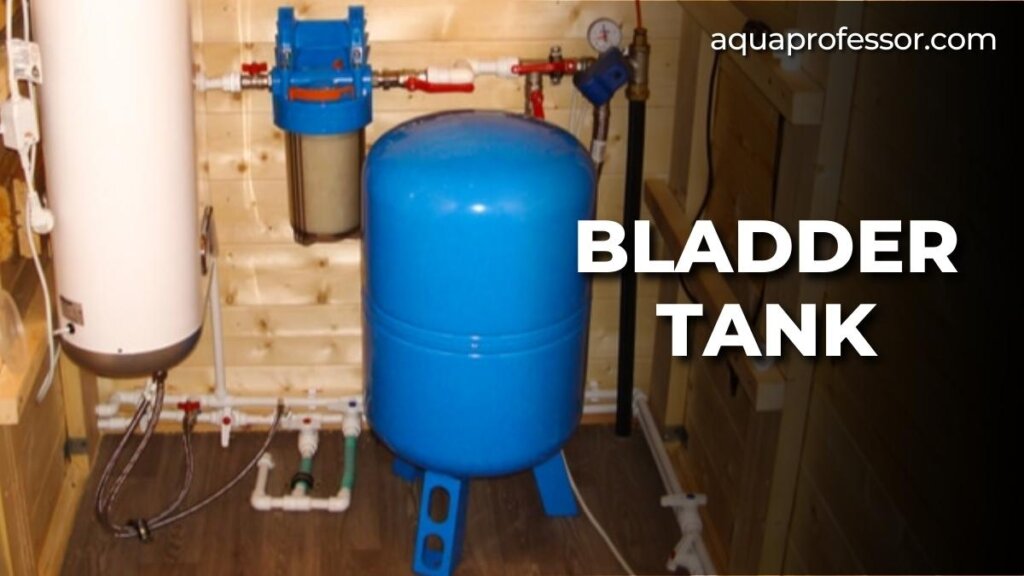
A bladder tank is a water storage tank that separates the water and air inside the tank with a flexible rubber bladder. The bladder is already pressurized with air, which gets squeezed when water is pumped into the tank.
It makes a pressurized space to store water. Bladder pressure tanks are commonly used in residential and commercial settings to provide consistent water pressure to the plumbing system.
The pros and cons of using a bladder pressure tank are as follows:
Pros
- They ensure the water pressure is the same throughout the house or building.
- They are easier to keep up than regular pressure tanks.
- It works more effectively than a traditional pressure tank system and uses less energy.
- They are less likely to leak or fill up with water.
- They can be used in many places, including homes, businesses, and factories.
Cons
- Bladder pressure tanks can be susceptible to damage from water pressure or external forces, which can cause the bladder to rupture or the tank to leak.
- It can be expensive to install compared to other types of water storage tanks.
- It requires periodic maintenance, such as checking and adjusting the air pressure inside the tank.
⚙️How Does a Diaphragm Pressure Tank Work?
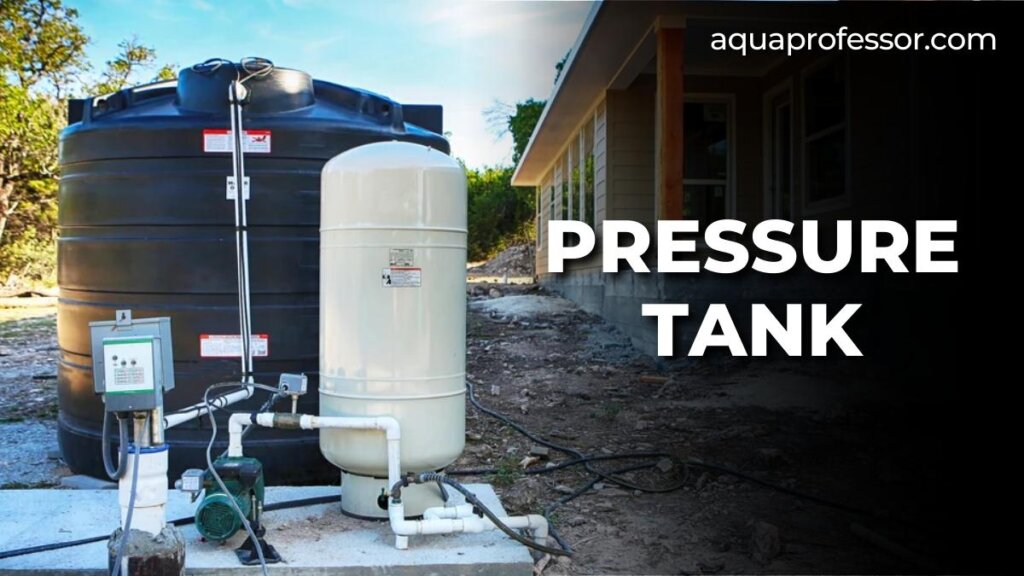
A diaphragm tank is a plumbing device to store and controls water pressure. It has a steel tank with a rubber diaphragm inside that separates the water and air compartments.
Water is pumped into the tank, and compressed air fills the air compartment above the diaphragm. When a faucet is opened, it creates pressure that forces water out of the tank.
Pros
- It provides consistent water pressure to plumbing systems.
- Reduces pump cycling, which makes the pump last longer.
- Stops water hammer, which can damage appliances and pipes.
- It reduces energy use by cutting down on pump cycling.
- It can be used with different water sources, like wells and city water supplies.
Cons
- It can need regular maintenance, like refilling the tank’s air pressure.
- It may need to be set up and adjusted by a professional.
🤔Which Is Better, the Pressure Tank or the Bladder Tank?
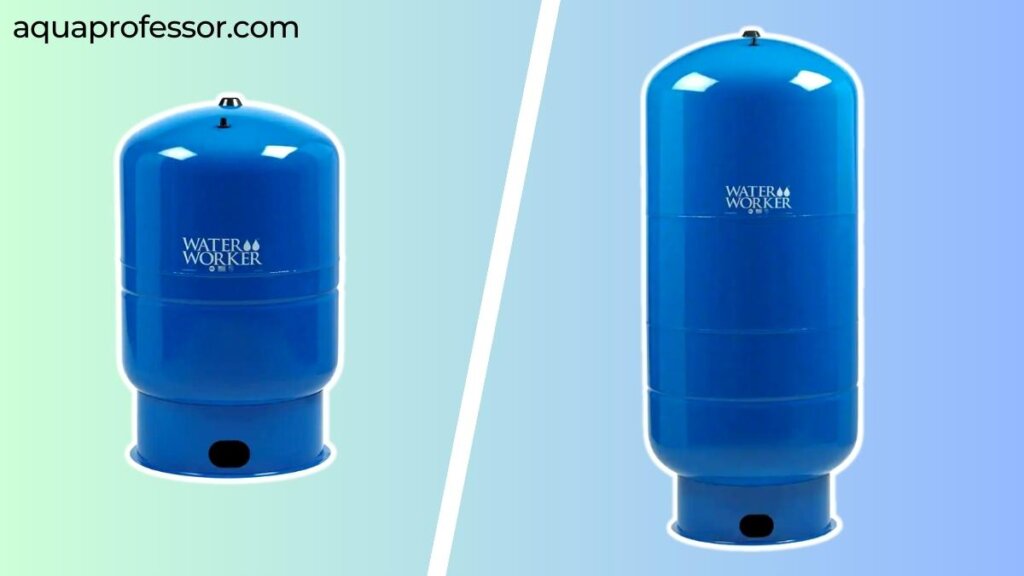
Pressure and bladder water tanks have advantages and disadvantages, and the better option depends on the specific needs of your water system. Here are some general comparisons:
Pressure Tank:
Bladder Tank:
Ultimately, a bladder tank may be the better option if your priority is maintaining constant and efficient water pressure. On the other hand, if cost and durability are your main concerns, a pressure tank is more suitable.
It is best to consult with a professional to determine which type of tank is best for your specific needs.
Also Read: 7 Reasons Why You've Air In Well Water Pipes
💡Bladder Tank vs. Pressure Tank: FAQs
Can you replace a bladder in a pressure tank?
Yes, you can replace a pressure tank bladder easily. Replacing a bladder in a pressure tank involves:
1. Draining the tank.
2. Removing the old bladder.
3. Installing a new bladder of the correct size and type.
4. Ensuring proper installation.
5. Refilling the tank.
6. Testing for proper function.
Do all pressure tanks have a bladder?
No, not all pressure tanks have a bladder.
Some pressure tanks, called diaphragm tanks, separate the air and water with a flexible diaphragm made of rubber or another material. Other pressure tanks, like galvanized tanks, don’t have a diaphragm or bladder.
Will a bigger bladder tank give me more water pressure?
Yes, a bigger bladder tank can increase water pressure. When a larger bladder tank is put in place, more water is in the tank, which can make the pump cycle less often. This means the pump will turn on and off less often, keeping the water pressure and flow steady.
What are the different types of well-pressure tanks?
There are many kinds of well-pressure tanks on the market, including bladder, diaphragm, galvanized, cement, stainless steel, and composite tanks.
Bladder and diaphragm tanks are the most common types used in homes because they work well and keep the water pressure steady.
How much does it cost to replace a bladder tank?
A new bladder tank can cost anywhere from $200 to $800 on average, and the price usually goes up for more complicated systems.
In addition to the cost of the tank itself, you may have to pay for installation labor and materials like plumbing fittings, pipes, and valves.
What is the average size pressure tank for a house?
Average-sized residential pressure tanks are usually sold in sizes varying from 20 gallons to 80 gallons.
The pressure tank drawdown is the factor that will let you decide which pressure tank will fit your house. You can calculate a pressure tank’s drawdown capacity by multiplying the pump’s flow rate with its minimum running duration. After you determine the drawdown capacity, multiply the computed number by 4 (since one-fourth part of the volume of a pressure tank holds the useful water). For example, the drawdown volume for a twenty-gallon tank will be six gallons of drawdown.

Naina has a profound understanding of how water quality affects our overall well-being. Her expertise is a guiding light for those seeking to live a healthy life. Besides raising awareness, her write-ups provide practical advice on identifying and mitigating water-related issues.
